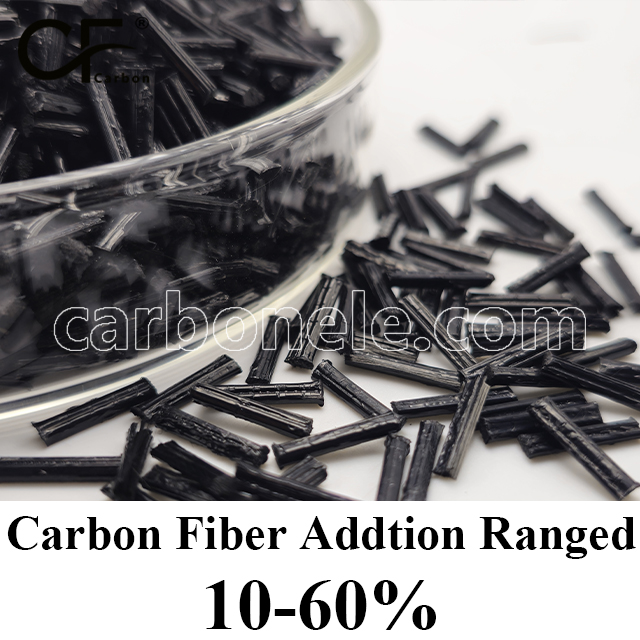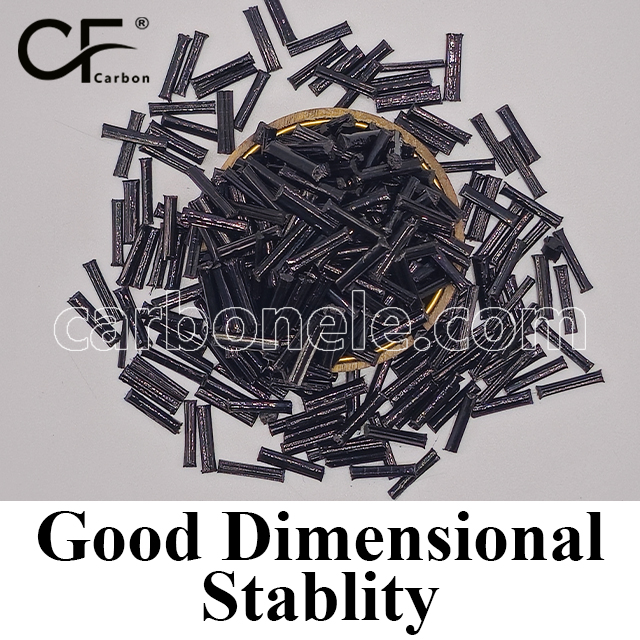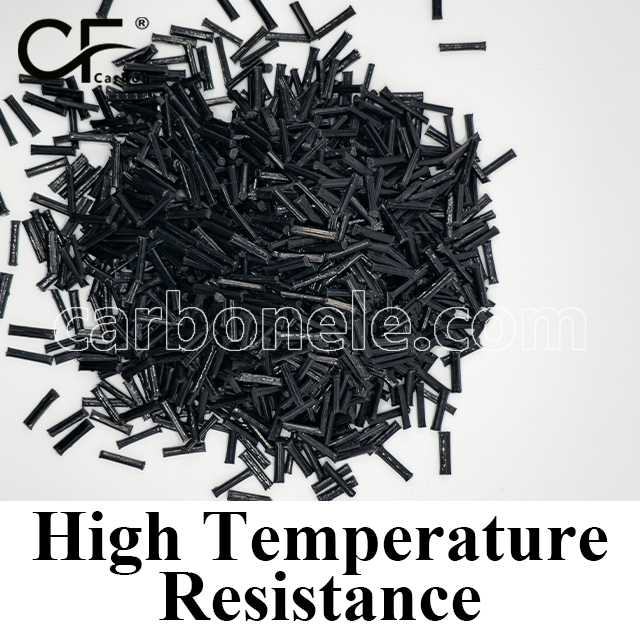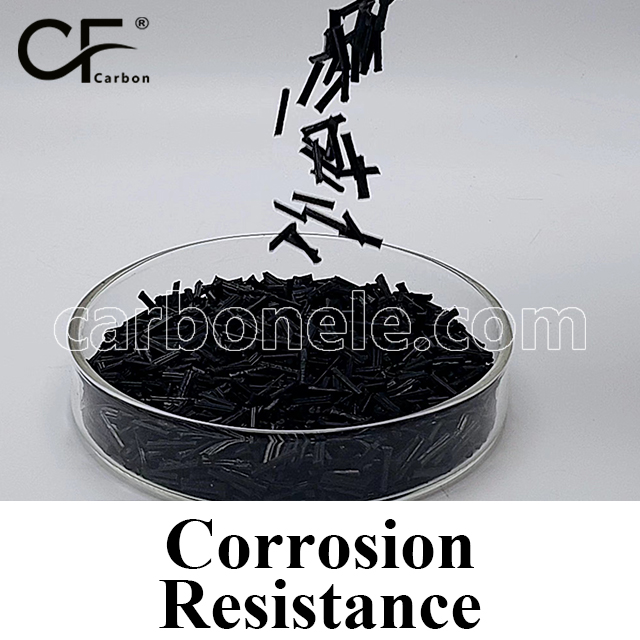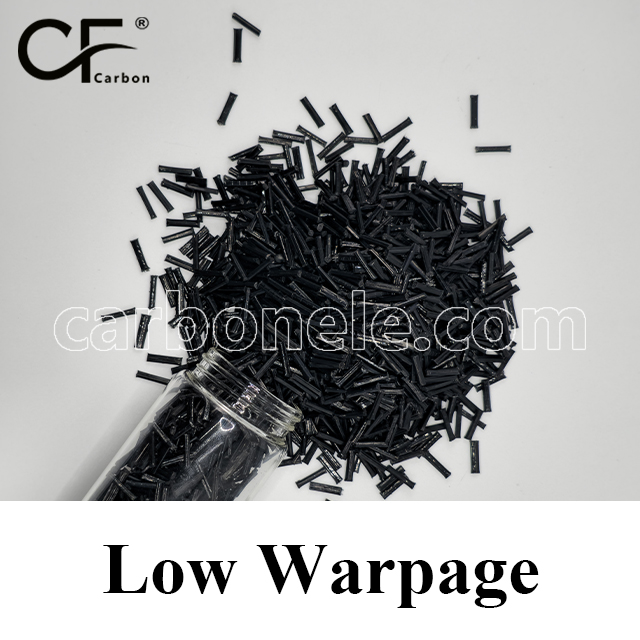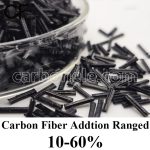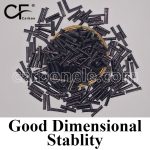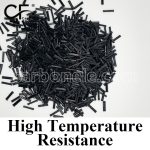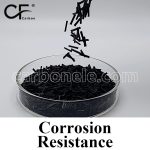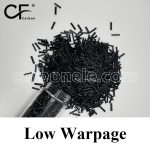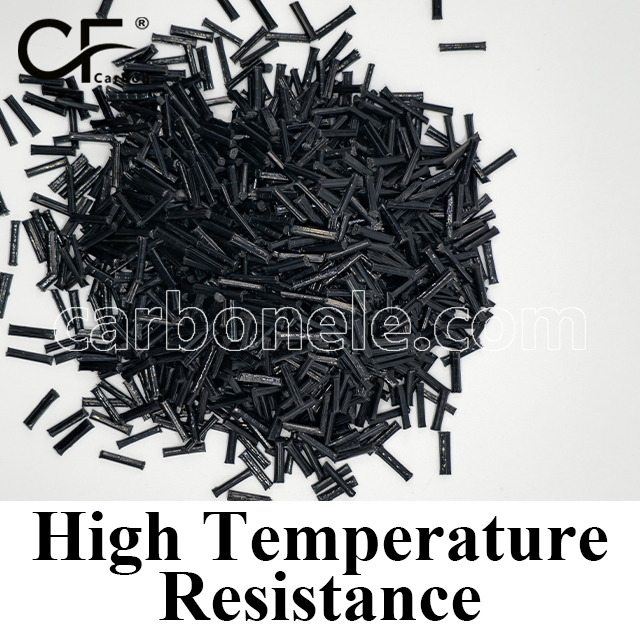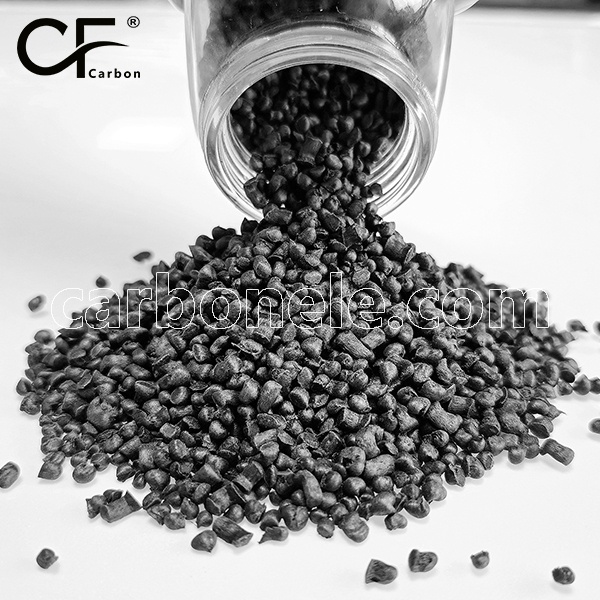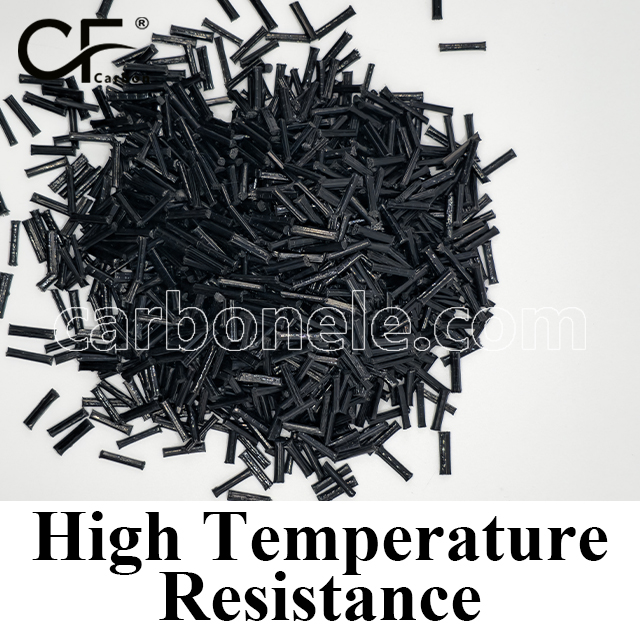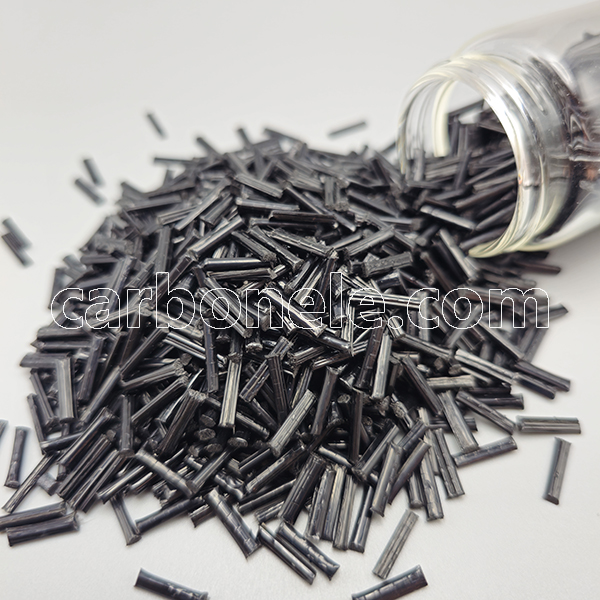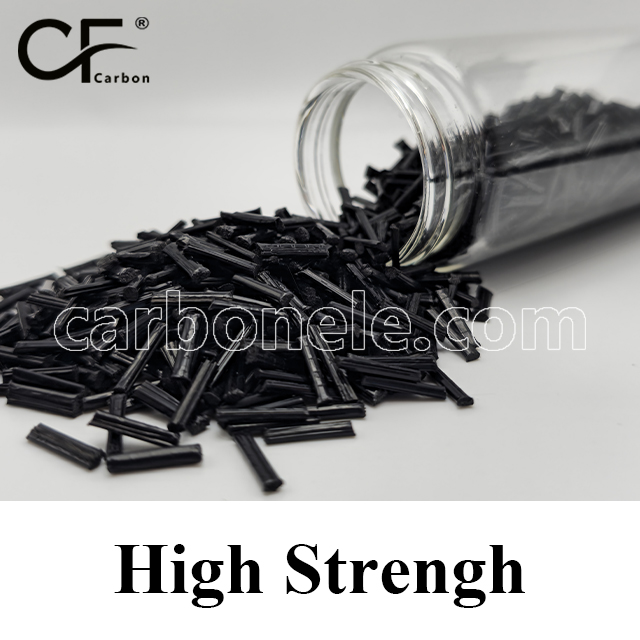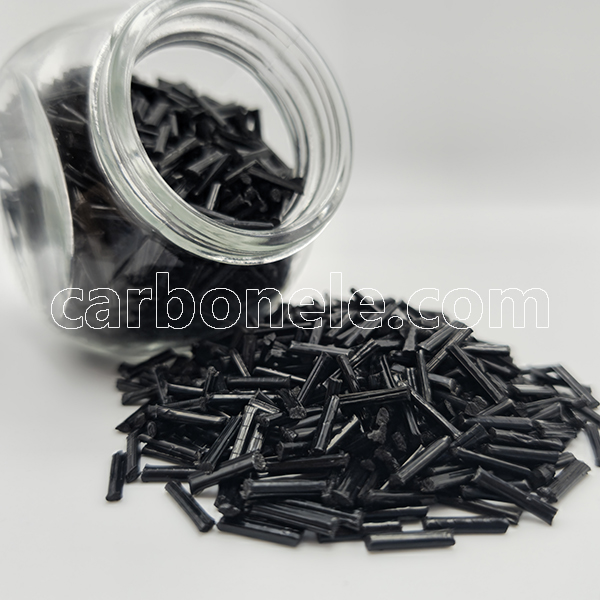
Flexible Polyamide Polymer TPU-LCF50
TPU-LCF50 is an ultra reinforced thermoplastic polyurethane composite with 50% long carbon fiber, offering exceptional tensile strength, stiffness, and thermal resistance while maintaining shock absorption and fatigue durability. Ideal for high load, semi structural components in automotive, industrial, and robotic applications requiring precision, toughness, and controlled flexibility.
- Model number: TPU-LCF-BCA5
- Matrix Resin: Thermoplastic polyurethane (TPU)
- Reinforcing Filler: Carbon fiber
- Appearance: Granules
- Grade: Injection/extrusion grade
- Packaging: 25kgs/bag
TPU-LCF50 | 50% Long Carbon Fiber Reinforced Thermoplastic Polyurethane
TPU-LCF50 is a high performance, ultra-reinforced thermoplastic elastomer incorporating 50% long carbon fiber, engineered for extreme mechanical loads, precision dimensional stability, and demanding structural flex applications. This formulation represents a new tier of semi-rigid composite performance—approaching the mechanical strength of metals—while preserving core TPU benefits such as impact resistance, fatigue durability, and chemical resilience.
Compared to TPU-LCF40, this 50% formulation delivers superior stiffness, improved tensile strength, and greater thermal resistance, enabling its use in load bearing, high cycle environments. The long fiber architecture ensures directional strength and enhanced fatigue resistance, making it a viable lightweight replacement for metals or high glass fiber composites in many dynamic structural contexts.
TPU-LCF50 is optimized for automotive, robotics, aerospace support systems, and industrial grade components where high strength, motion control, and shock mitigation are all required in one material.
Core Performance Highlights
Mechanical Properties
Carbon Fiber Content: 50% (Long Carbon Fiber, aligned for maximum structural load capacity)
Tensile Strength: ≥ 90 MPa
Elongation at Break: ≥ 40%
Shore Hardness: ~98A
→ Extreme mechanical reinforcement while retaining essential flexibility for vibration control and impact response.
Thermal Resistance
Heat Deflection Temperature (HDT): ~125 °C
Continuous Use Temperature: Up to 115 °C
→ Performs in high temperature zones near engines, motors, or underhood compartments without deformation.
Environmental & Chemical Durability
Moisture Absorption: Low — ensures long term stability even in humid or submerged conditions
Chemical Resistance: Outstanding — resists exposure to oils, fuels, industrial solvents, and hydraulic fluids
→ Robust performance in chemically aggressive or unpredictable operational settings.
Processing & Manufacturing
Molding Methods: Injection molding, extrusion, long fiber capable 3D printing
Surface Finish: Matte with high carbon fiber visibility and texture
Tooling Considerations: Requires wear resistant tooling (hardened steel), elevated injection pressures, and optimized gate/runner geometry to preserve fiber alignment
→ Process-compatible with fiber optimized production setups for high performance end use parts.
Target Applications
Automotive & Mobility
Reinforced underhood supports, semi structural brackets, drivetrain adjacent components
→ Replaces metal or high glass fiber plastics where mechanical shock and chemical exposure are concerns.
Industrial Equipment
Load-carrying isolators, impact plates, reinforced enclosures
→ Ideal for motion heavy assemblies needing structural precision under repeated stress and fluid contact.
Robotics & Automation
Structural flex joints, robotic frame supports, actuator linked casings
→ Delivers lightweight yet robust load handling for high duty robotic systems.
Protective & Tactical Systems
Exoskeletal armor frames, impact dissipating plates, ultra durable inserts
→ Combines strength, toughness, and repeatable deflection performance in rugged or wearable equipment.
Performance Summary Table
| Property | Value / Description |
|---|---|
| Carbon Fiber Content | 50% (Long Carbon Fiber) |
| Tensile Strength | ≥ 90 MPa |
| Elongation at Break | ≥ 40% |
| Shore Hardness | ~98A |
| Heat Deflection Temp. | ~125 °C |
| Long Term Service Temp. | Up to 115 °C |
| Water Absorption | Low — stable in humid, wet, or submerged environments |
| Chemical Resistance | Excellent — fuels, oils, greases, solvents |
| Wear Resistance | Ultra high — suitable for repeated motion and high load wear |
| Processing Methods | Injection molding, extrusion, LCF compatible 3D printing |
| Surface Finish | Matte with visible fiber pattern |
| Dimensional Stability | Exceptional — ideal for high precision semi rigid structures |
Friction coefficient of PA12-LCF
The friction coefficient of TPU is typically between 0.3 and 0.5, while TPU-CF, with added carbon fiber, lowers the friction coefficient to between 0.2 and 0.4. The smaller the value, the better the wear resistance. Therefore, TPU-CF generally offers better wear resistance than pure TPU, especially under high-load conditions.
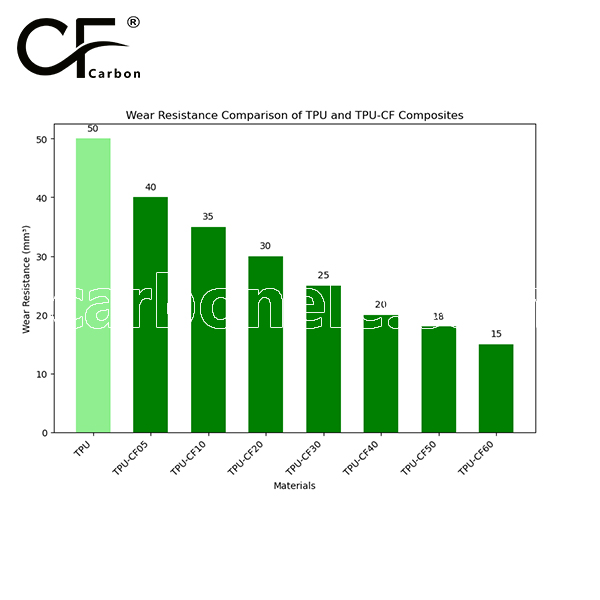
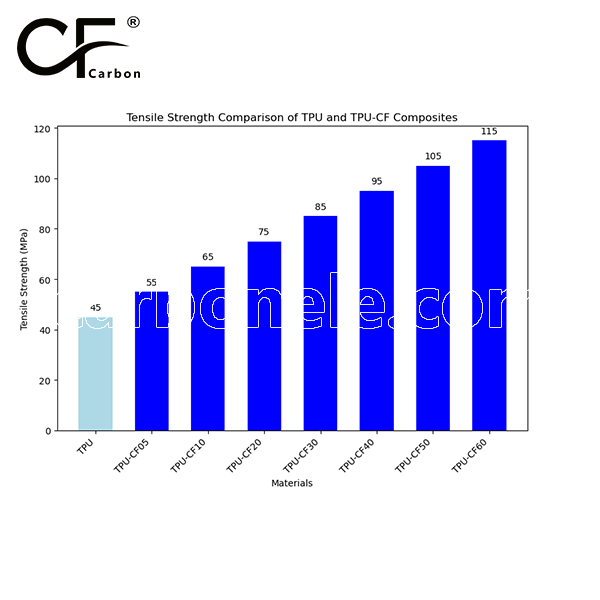

Frequently Asked Questions
Carbon (Xiamen) New Material Co., Ltd. aims to provide buyers with "one-stop" worry-free high-quality services. Here you can find all information about carbon fiber engineering plastics. If you still have questions, please send us an email for consultation!
-
How can I contact the manufacturer of a product that interests me?
When you find a product you are interested in, you can contact the manufacturer directly by sending an email and we will get back to you as soon as possible.
-
How do I find the products that interest me?
All you need to do is enter the keyword, product name in the search window and press the Enter key on your keyboard. Your search results page will then be displayed. You can also search within the product category pages on the home page. Each category is divided into subcategories, allowing you to refine your search and find products that interest you.
-
Where will I find a buying guide?
Please contact our after-sales service directly and we will provide you with a comprehensive operating guide.
-
What are CF Reinforced Thermoplastic Composites?
CF Reinforced Thermoplastic Composites are materials where carbon fibers are incorporated into a thermoplastic matrix. They combine the strength and stiffness of carbon fibers with the processability and recyclability of thermoplastics. For instance, they are used in automotive parts like bumper beams.
-
What are the benefits of CF Reinforced Thermoplastic Composites over traditional composites?
The key benefits include faster production cycles, easier recyclability, and better impact resistance. They also offer design flexibility. An example is in the manufacturing of consumer electronics casings where complex shapes can be achieved more easily.
-
How are CF Reinforced Thermoplastic Composites processed?
Common processing methods include injection molding, extrusion, and compression molding. Injection molding is widely used for mass production. For example, in the production of small components for the medical industry.
-
What industries use CF Reinforced Thermoplastic Composites?
They are utilized in aerospace, automotive, medical, and sports equipment industries. In aerospace, they can be found in interior components. In the medical field, they might be used in prosthetics.
-
How does the carbon fiber content affect the properties of the composites?
Higher carbon fiber content generally leads to increased strength and stiffness but may reduce ductility. A moderate content is often balanced for specific applications. For example, a higher content might be preferred in structural parts of a race car.
-
What are the challenges in using CF Reinforced Thermoplastic Composites?
Challenges include higher material costs, complex processing equipment requirements, and ensuring uniform fiber dispersion. Issues with adhesion between the fibers and the matrix can also arise. An example is in achieving consistent quality in large-scale production.







